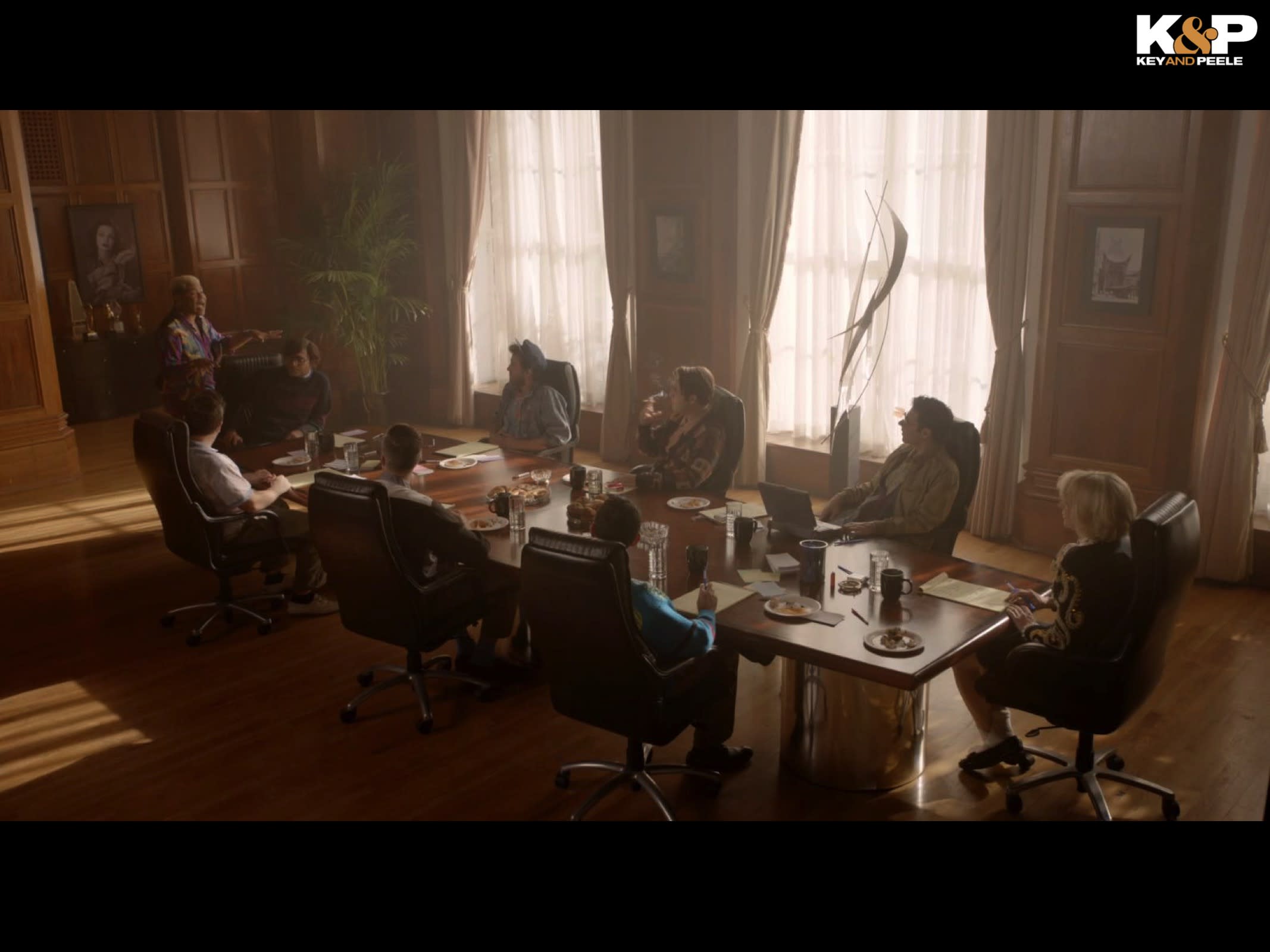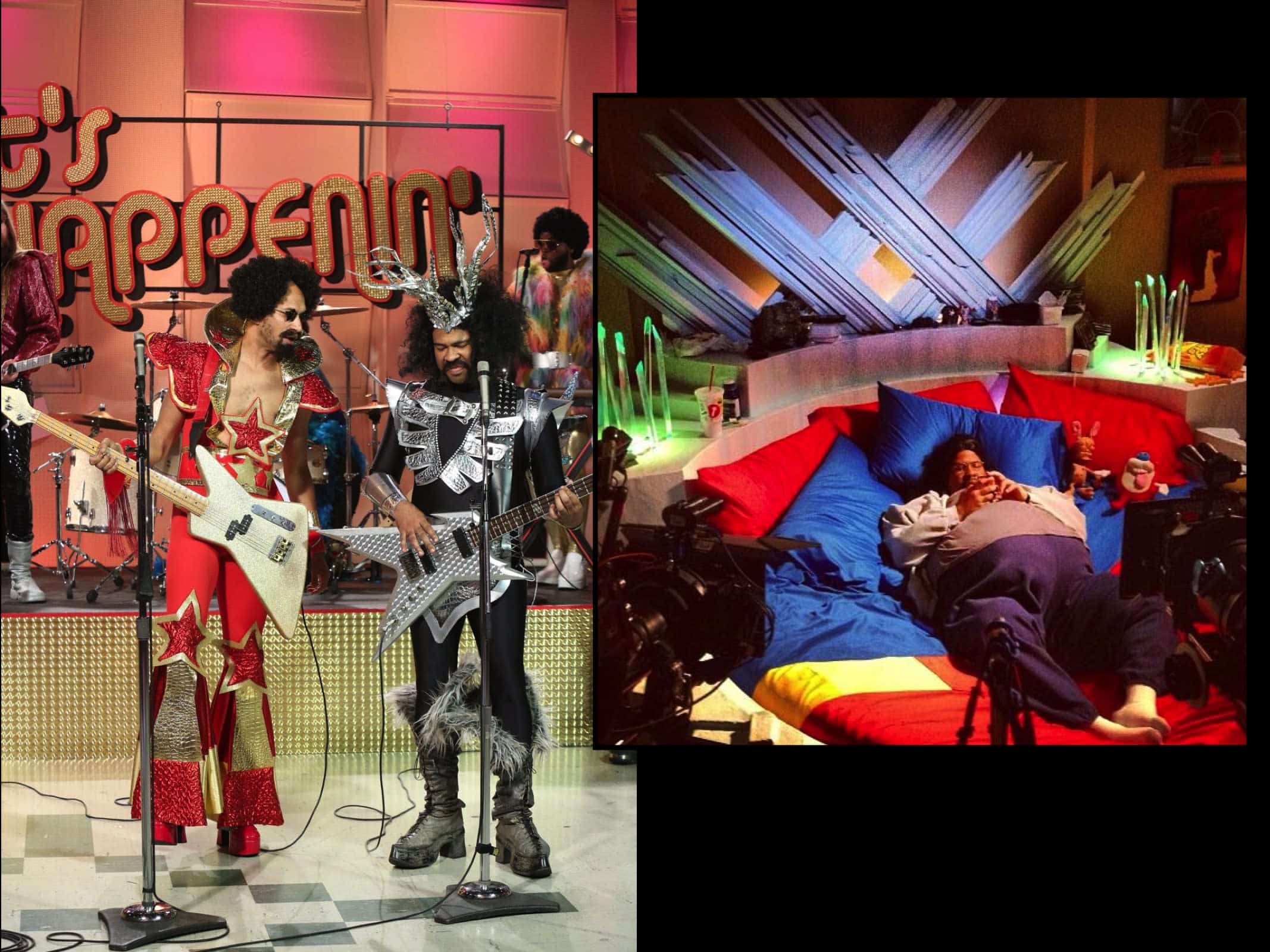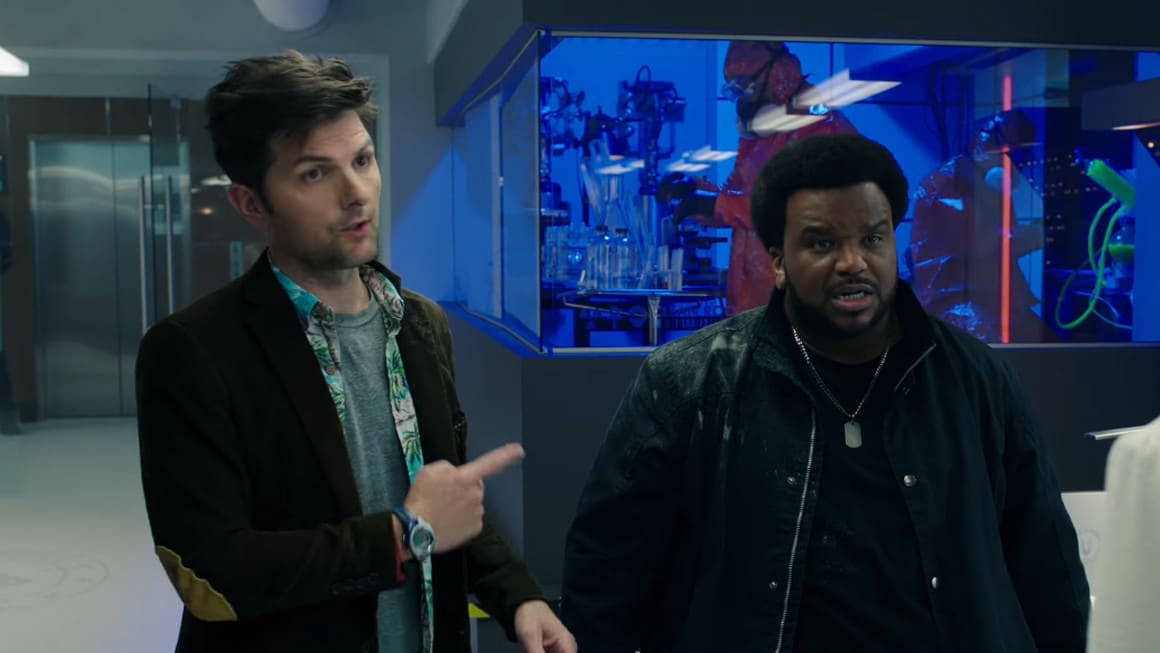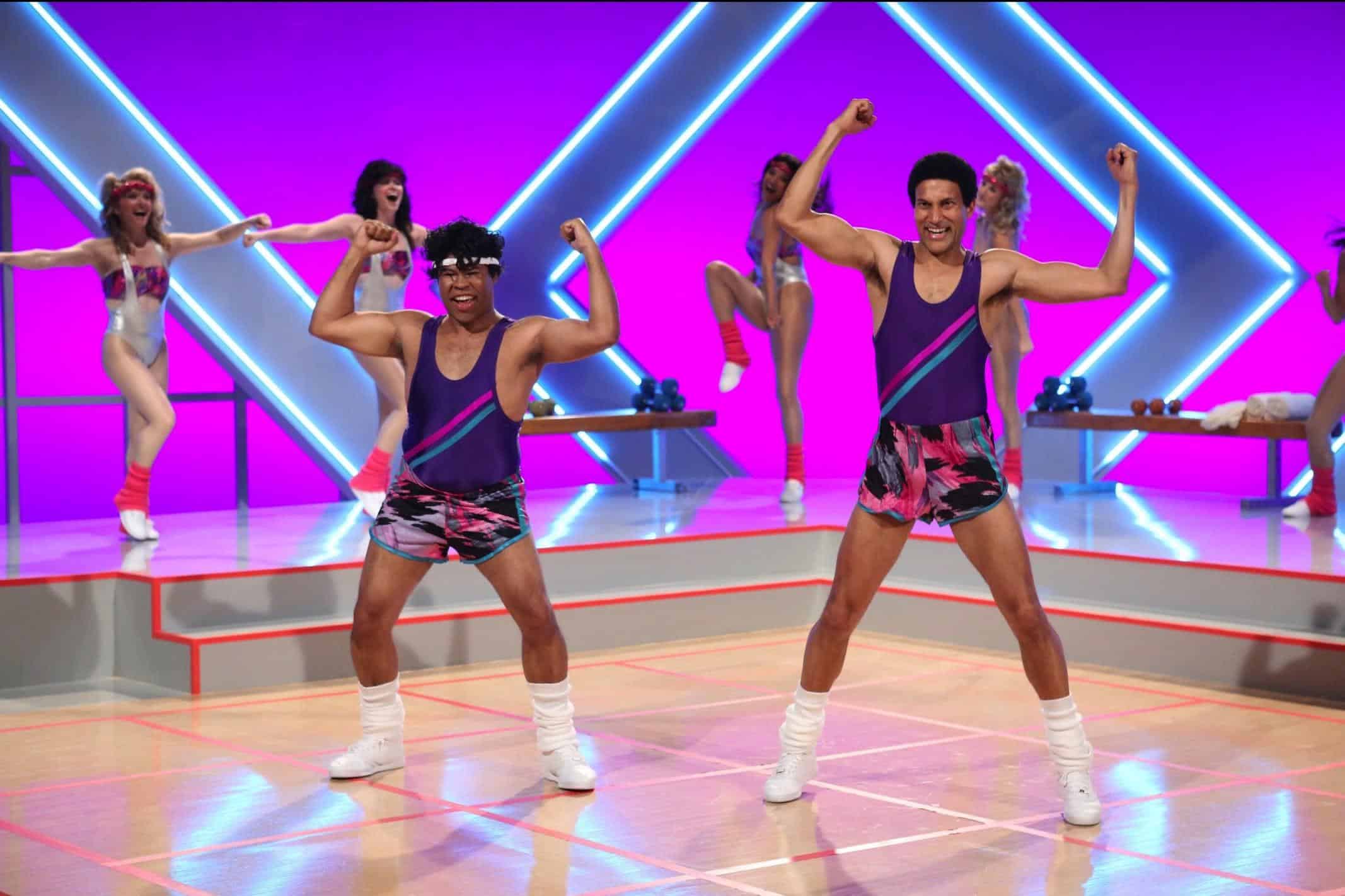Living in New York City, and in his third year of pursuing a fine arts and illustration major, wondering just what it is he might do when he graduated, Gary Kordan saw a flyer in the hallway of the school of visual arts. It read: “Interns needed at CBS.” Kordan immediately ripped the flyer off the wall, tossed a quarter into a payphone, and headed for an interview to work for The Joan Rivers Show. That internship turned into an opportunity to work with the show’s art department, where the production designer realized what the shape of his future should look like.
“It was like a lightbulb that went off and I said, ‘Wait a second, this is exactly where I should be. I’m an artist, and I’m in the art department in television,’” Kordan says over the phone from Los Angeles, in traffic on the 101. “And I’ve been doing it ever since—art director, production designer since that day I started my internship at CBS over twenty years ago.”
He may not have known it then, but it was tearing off that internship ad that would lead to the first step of a long career. Kordan is best known as the production designer for all sets on the complete runs of both the groundbreaking sketch comedy show Key & Peele and the party-ready, stoner-friendly workplace sitcom Workaholics. He’s also worked on Fox’s supernatural Ghosted, and the series Time Traveling Bong, Betas, Just Add Magic, and Nobodies.
When Kordan first got his gig at CBS, all the other interns had backgrounds in communications. So when it came time the show needed a specialty graphic or prop, Joan Rivers pointed to him—“the kid who goes to art school”—to get it done. Within about a month, Kordan had his first piece on television, and began a working relationship and friendship with Rivers that lasted the rest of her life. Not only was she was his first boss; she became a huge champion for his growth in the industry. Kordan credits Rivers as a major part of who he is today and why he’s stayed in the business so long.
“Joan was a trailblazer and a legend and a comedian, and whether you liked her or not, she was the hardest working person in showbiz,” Kordan says. “What I saw her doing was never resting on the fact she had one job. She would say to me that you always need to have 10 balloons in the air, because nine of them are going to pop. Here’s someone whose shows were cancelled, whose projects fell apart. And I saw, no matter how famous or rich you are, if you’re freelance and you’re an independent contractor and you work in the entertainment industry, and you don’t have a job job, which I’ve never had, you need to always be thinking, what’s the next thing? How can I build on this? How can I have a vision for the future?’”

Set design by Kordan for “Hollywood Sequel Doctor,” Key & Peele season five, episode eight.
Kordan was only 19 years old when he started at The Joan Rivers Show, and he says one of the most striking things to him about the experience was watching Rivers treat not only her staff and crew with the utmost respect, but everyone she came across. “She knew everyone’s name, she knew what everyone did, she appreciated the work they did,” Kordan says. Essentially, his takeaway was that she realized how much of a team it took to put together a show like that, and that she was just another cog in the machine—the talent, of course, but still a cog.
“I’m very aware that it takes a team of dozens and dozens and dozens—sometimes a hundred people—in the art department on a show to create the vision and to create the sets that need to be done,” Kordan says. “So I’m the production designer, I’m the department head. But without the set decorators and the production coordinators, and the graphic designer, and the buyers, and the art directors, and the scenic painters, I can’t do anything. So I never treat anyone with any disrespect. I know everyone’s name, and I know how valuable they all are.”
It takes that high level of professionalism and consideration, not to mention the superhuman work ethic he also observed in Rivers, to make a show like Key & Peele run smoothly. When work started, Kordan and his team received a binder packed with 86 to 90 sketches—all employing different time periods, styles, genres—and were given three weeks to prep them. That would mean breaking the sketches down, coming up with a look for each, designing sets, finding locations, building them, and set dressing them. Then came the actual shooting, which would be on a schedule of about 10 sketches per week for seven weeks in a row, with the art department firing on all cylinders, sometimes working seven days a week, almost always exhausted.
“But the reason we did that is because Jordan [Peele] and Keegan[-Michael Key] were phenomenal to work for,” Kordan says. “And the director, Peter Atencio, wanted every single sketch to look cinematic, so all the department head were bringing their A-game every single day to make sure no matter what the sketch was, it looked like a 100 million dollar feature. Quite often we’d have $1,500 or $3,000 in the art department to make that happen.”
“Key & Peele was a once in a lifetime job, where every time a season ended, you couldn’t imagine doing it again because you were so tired. But when it would get picked up again I couldn’t wait to go back.”
Key & Peele—which Kordan calls his “legacy project”—has made a major lasting impact. People are still discovering the show on YouTube. The years that Jordan Peele spent writing and crafting the show helped hone the skills he needed to make last year’s wildly critically acclaimed Get Out. Billed as a comedy by the Golden Globes, it’s more of a horror movie; in the words of Peele himself, “Get Out is a documentary.” Kordan is proud of and grateful for the show’s lasting influence, noting that few projects are noticed by family and friends at a barbeque, much less the general public, and he doesn’t take that lightly.
“When someone says, ‘I saw the show that you production designed and I liked it,’ it’s really what you do it for,” Kordan says. “It’s the only reason to work such crazy hours and to come to battling budgets and that kinda stuff. It’s for people to notice that production designs were a prominent feature in a show that I worked on.”

Set design by Kordan as seen on Key & Peele season three.
So how did Kordan get to that point? Hard work is an obvious catalyst, but he’s also notably meticulous with his pitches. Between a phone call and a meeting, ideally, there’s time for Kordan to get the script, read it, break it down, and come up with a vision of how he sees the project looking. He does research on the people involved, checks out the projects they worked on previously, and see what the aesthetics of those projects are. And then he puts together a full-blown presentation with photographs, and arranges it in a clever way, like maybe creating a prop from the script and placing the photos inside it.
“Basically something that shows them I’ve read it, I get it, I have a vision, I’m walking into the meeting and I’m saying, ‘Here’s how I see your project looking. I’ve already given it thought.’ Instead of going in blind and them saying, ‘We don’t know how we want it to look, we know we want it to look good.’ I have the upper hand and I’m able to say, ‘Here’s the vision, here’s the look.’ I also say in those meetings, ‘If there’s anything here you don’t like, or if it doesn’t look how you envision it, tell me.’ That’s helpful, too, because I know not to go in that direction when I’m designing the sets, looking for locations with the location manager, or putting graphic design together for the show.”
Kordan doesn’t get every job—more like a couple for every 10 meetings that he goes to. Personality conflicts, politics, and scheduling can all mean that something won’t work out. Sometimes he walks out of a room and realizes he didn’t even want the job. But by putting in that extra effort, he’s made an impression on the people in the room, and that makes them all the more likely to dial his number next time they’re looking for a production designer. It’s about patience, too—”like planting seeds,” Kordan says.
Kordan has a secret weapon for his design work—his wife, Justine Ungaro, is not only a fantastic photographer, but also has an uncanny knack for predicting design and color trends. If he’s working on something that’s set to air a year or two from now, Kordan will turn to Ungaro for advice. “I ask Justine, ‘What color trends and what design trends will be popular next year when this show is out?’ And I’m not exaggerating when I say that she has been right 100% of the time.”
“She’ll say rose or blush,” Kordan adds. “I’ll paint a wall that colour, and by the time that show airs, that’ll be the trendy thing that Urban Outfitters and all the sort of cool, hipster shops are doing.”
The couple also owns Muse, a, 800-square foot creative space that can be transformed to accommodate workshops, photo shoots, pop-up shops, entertainment industry filming, and almost any other small event you can think of. “It’s about having a space in the community that’s affordable whether you want to rent it and have an event there, or we’re going to produce something. It’s about creating a sense of community within the industry; a place to go whether it’s a fundraiser or a comedy show or a podcast night,” Kordan says.

Set design by Kordan as seen on Ghosted.
When I ask Kordan if he has any tips for people looking to get into production design, he refers to an old memory I helped dig up by finding his credit (“Tattoo Artist”) on The Rosie O’Donnell Show in 1997. While he was an art director and production designer in New York City, doing off-Broadway shows and work for VH1, MTV, and The Food Network, Kordan got a call from his pal (and, at the time, The Rosie O’Donnell Show producer) Judy Gold. She told him that Regis Philbin was coming on the show, and they desperately needed someone to tattoo the Live! With Regis and Kathie Lee logo on O’Donnell’s foot.
Kordan had never done that kind of thing before, but he worked all night to figure out how, and got the supplies. By 7 am, he had Rosie O’Donnell’s foot in his hand, painting the tattoo on, and then spent the rest of the morning wheeling her around in a wheelchair, so the ink wouldn’t get ruined, joking and laughing and having a great time. If he had looked at his lack of tattoo experience and thought, “I don’t know how to do this,” that opportunity might’ve been lost forever.
His other advice? Look at who and where you want to be in 10 years time, and look at who’s doing that right now. Then study their work, do some research, and get in touch with them. Tell them you admire their work, and want to someday do what they’re doing. Kordan says that there have been multiple times he’s referred someone who reached out to him for a job he wasn’t able to do.
“You’d be surprised, as a young designer, that people you admire in the industry are there, and they’re working and they’re accessible,” Kordan says. “So I would say pay attention to who is doing what you want to be doing, and put your own creative twist on it. Reach out to them, and have them help you get to the next level.”
Most importantly, he says, “You gotta say yes to everything. Joan Rivers said yes to everything. If Joan was still alive and you called her right now and said, ‘Can I interview you for this magazine?’ Joan would say yes. That’s who we always need to be as artists—people who say yes. We need to get paid for it! It’s a job. But other than that, it’s always yes.”
More on TV and film:
Game of Thrones Cinematographer Explains His Visual Influences
‘The Walking Dead’ Director Michael Satrazemis Shoots Zombies With Film
The Brazilian Illustrator Who Sketched an Oscar-Nominated Feature Film









